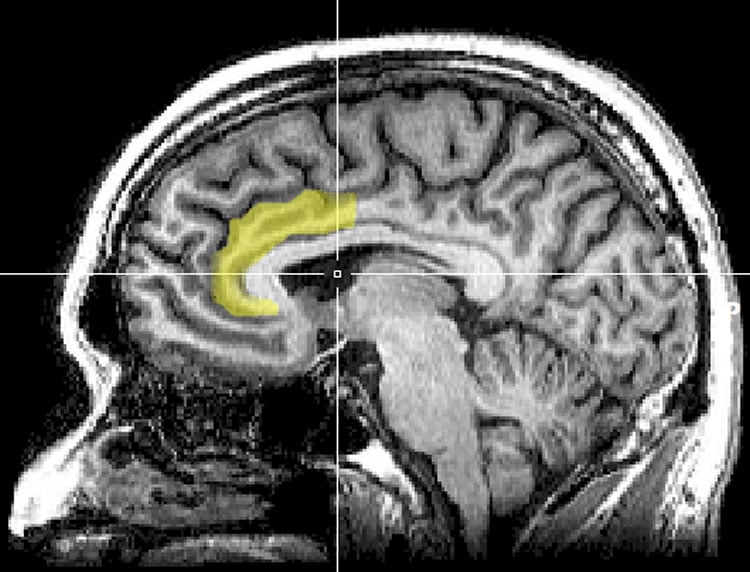The aging process is associated with declines in brain function, including memory and how fast our brain processes information, yet previous research has found that higher levels of cardiorespiratory fitness in older adults leads to better executive function in the brain, which helps with reasoning and problem solving. Higher cardiorespiratory fitness levels have also been found to increase brain volume in key brain regions.
A new study from a team at the Beckman Institute for Advanced Science and Technology at the University of Illinois reveals the connection between brain activation, cardiorespiratory fitness, and executive function in older adults, finding that dual-task processing in a core executive function brain region is associated with higher cardiorespiratory fitness and dual-task performance.
“Previous studies have shown that there’s a relationship between cardiorespiratory fitness and behavioral performance in older adults. Other studies have looked at cardiorespiratory fitness and brain function, but really linking all three of those hasn’t been quite been done as explicitly as we did in this paper,” said Chelsea Wong, a M.D./Ph.D. student at the University of Illinois and first author on the paper, published in Frontiers in Aging Neuroscience.
The team, led by Art Kramer, Beckman Institute director and professor of psychology and neuroscience at Illinois, examined brain imaging and fitness level data from 128 adults between the ages of 59-80.
With functional magnetic resonance imaging (fMRI) scans gathered in the Beckman Institute’s Biomedical Imaging Center, the researchers found that certain regions of the brain were activated more when performing two simultaneous tasks compared to a single task.
“The reason we looked at dual-task specifically is because it’s a measure of executive function, which is required for multiple cognitive processes, such as working memory, task management, coordination, and inhibition,” said Wong. “We know that as people age, executive function declines, so we found that with higher cardiorespiratory fitness, you can enhance executive function performance behaviorally as well as executive function-related brain activation.”

The team found the overall relationship between cardiorespiratory fitness levels and higher executive function may be partially explained through activation in a region of the brain called the anterior cingulate cortex and the supplementary motor area (ACC/SMA).
“We analyzed areas of the brain that were activated while the participants were completing two tasks, and found that the ACC/SMA activation was associated with higher cardiorespiratory fitness. It’s an important area for higher level functions, such as conflict monitoring, multitasking, and dual-task processing itself,” said Wong.
“This research adds to our growing understanding of the relationship among physical activity and cognitive and brain function–and suggests that we can improve our brain health by changing our lifestyle even as we age,” said Kramer.
Funding: This work was supported by the National Institute on Aging.
Source: August Schiess – Beckman Institute for Advanced Science and Technology
Image Credit: The image is credited to Geoff B Hall and is in the public domain
Original Research: Full open access research for “Brain activation during dual-task processing is associated with cardiorespiratory fitness and performance in older adults” by Chelsea N. Wong, Laura Chaddock-Heyman, Michelle W. Voss, Agnieszka Z. Burzynska, Chandramallika Basak, Kirk I. Erickson, Ruchika S. Prakash, Amanda N. Szabo-Reed, Siobhan M. Phillips, Thomas Wojcicki, Emily L. Mailey, Edward McAuley and Arthur F. Kramer in Frontiers in Aging Neuroscience. Published online August 12 2015 doi:10.3389/fnagi.2015.00154
Abstract
Brain activation during dual-task processing is associated with cardiorespiratory fitness and performance in older adults
Higher cardiorespiratory fitness is associated with better cognitive performance and enhanced brain activation. Yet, the extent to which cardiorespiratory fitness-related brain activation is associated with better cognitive performance is not well understood. In this cross-sectional study, we examined whether the association between cardiorespiratory fitness and executive function was mediated by greater prefrontal cortex activation in healthy older adults. Brain activation was measured during dual-task performance with functional magnetic resonance imaging in a sample of 128 healthy older adults (59–80 years). Higher cardiorespiratory fitness was associated with greater activation during dual-task processing in several brain areas including the anterior cingulate and supplementary motor cortex (ACC/SMA), thalamus and basal ganglia, right motor/somatosensory cortex and middle frontal gyrus, and left somatosensory cortex, controlling for age, sex, education, and gray matter volume. Of these regions, greater ACC/SMA activation mediated the association between cardiorespiratory fitness and dual-task performance. We provide novel evidence that cardiorespiratory fitness may support cognitive performance by facilitating brain activation in a core region critical for executive function.
“Brain activation during dual-task processing is associated with cardiorespiratory fitness and performance in older adults” by Chelsea N. Wong, Laura Chaddock-Heyman, Michelle W. Voss, Agnieszka Z. Burzynska, Chandramallika Basak, Kirk I. Erickson, Ruchika S. Prakash, Amanda N. Szabo-Reed, Siobhan M. Phillips, Thomas Wojcicki, Emily L. Mailey, Edward McAuley and Arthur F. Kramer in Frontiers in Aging Neuroscience. Published online August 12 2015 doi:10.3389/fnagi.2015.00154






